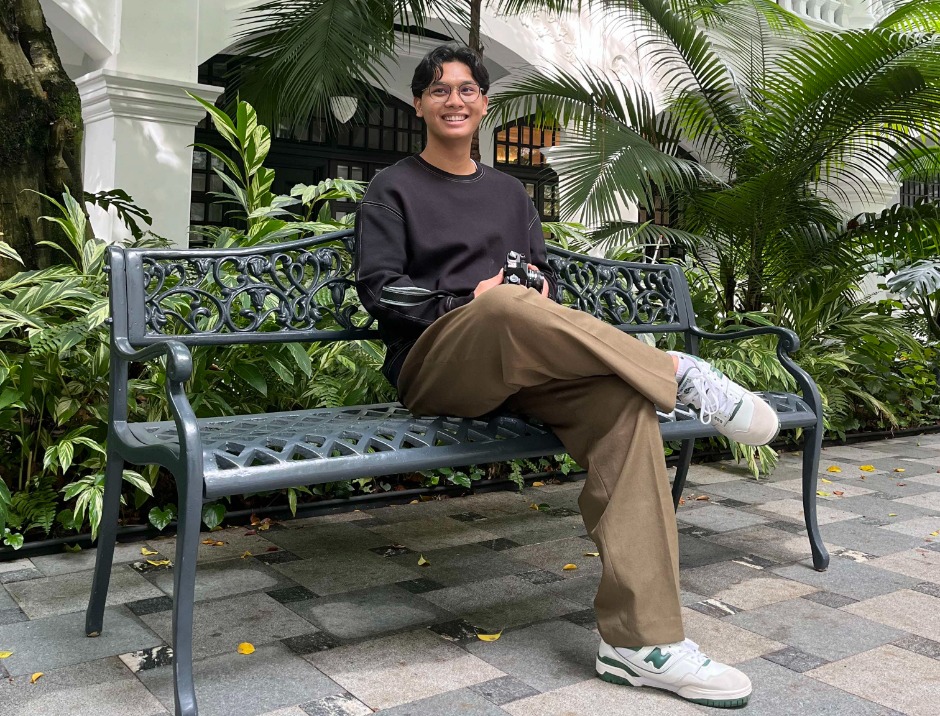Nalaka Edirisinghe, Temasek Polytechnic, President’s Award for Teachers 2017 Finalist
When the Dyslexia Association of Singapore wanted to expand their outreach in order to identify more children with the condition, it turned to Temasek Polytechnic for help. The polytechnic knew the man for the job: Dr Nalaka Edirisinghe.
As a course manager at the School of Informatics & Information Technology (IT), he had the know-how and the tools. He guided his students to produce a mobile application to teach parents about dyslexia. With the app, parents could also take an online survey as a first step towards identifying children with this condition.
Coding aside, he made sure his students did their groundwork to ensure that the application was accurate. They met with representatives from the Association, visited their specialised tuition centres, and learnt some of the identifying traits of the disorder.
The exercise was right up Dr Nalaka’s alley for another reason: his desire to help his students make a difference. He prefers getting them to work with non-profit organisations, because such organisations gain more from each collaboration than commercial entities which have more resources at their disposal.
“The students get really excited when they see their work running on an app with a social purpose, because they’ve done something that could be useful for somebody. This means more to them,” he says.
His track record is filled with such projects: in Code for Charity, his students taught secondary-school students basic coding skills to complete challenges and unlock sponsored donations. They managed to hit their donation target of $15,000, which went towards helping less-privileged students in the polytechnic.
Then there is the Istana Garden Walk, a mobile application his students developed for visitors to the presidential grounds. When used to scan QR codes at various locations, the application reveals historical trivia about the Istana.
One of his most impactful initiatives has been helping senior citizens make better use of their smart devices through one-day workshops held at Temasek Polytechnic several times a year. He assigns two students to guide each senior to use online maps, health-monitoring applications, as well as in the taking and sharing of digital images with family and friends.
“It was great to see the interaction between generations,” he says. “For kids today, using a smartphone is second nature, so these are some practical skills that students can impart to seniors to bridge that generation gap.”
Starting Students Off On the Right Foot
Dr Nalaka’s students don’t all come to him ready to tackle such projects, though. Many of them are able to do so only because he has taken time to build up their confidence.
He starts early, opting to teach fresh intakes. He believes it is important to ease their transition from secondary school to polytechnic, where they are expected to be more self-reliant.
“Students who do badly in the first year may think ‘this is not for me’,” he says. “So I spend a lot of time interacting with them, getting to know them and helping them believe that they can take on the curriculum successfully.
“From Year Two onwards, we give them the chance to take that confidence to do something worthwhile outside the classroom with projects that impact real people.”
Learning How Students Learn
Part of that encouragement comes from understanding what motivates students to learn. And Dr Nalaka doesn’t just know it; he actively researches it.
His current area of interest: gamification. Specifically, how to incorporate game elements such as “points”, “levelling up”, and “special abilities” in e-learning to make it more rewarding for participants. He is developing a tool for educators to create such e-learning lessons.
“What we have learnt so far is that students want more engagement and interactivity in e-learning. They find it boring to go through and learn things when there is no element of interaction with the material, or their friends,” he observes.
He recently presented the interim results of his research at the 24th International Conference on Learning, held in the US.
He puts this knowledge to good use, developing online modules for PolyMall, a learning platform that can be accessed by all five polytechnics. He created the first Information and Communications Technology module for the platform, featuring 55 videos and 35 e-learning packages stuffed with quizzes and questionnaires on various programming languages.
The end goal is still the same though: to involve students in projects extending beyond the classroom, such as working with non-profit organisations and commercial entities even as they learn their craft in school.
“They need to see that they can create something that has value. This inspires and empowers them to come up with ideas that they may wish to pursue after graduation. Computing is so much more than just typing a bunch of commands into a computer.”






